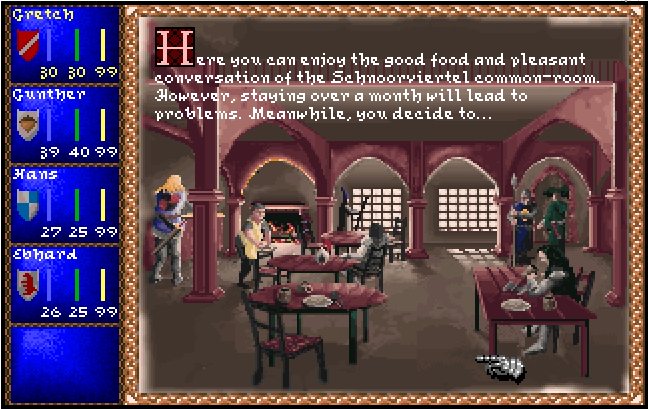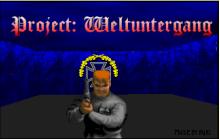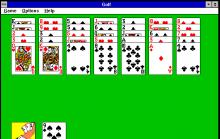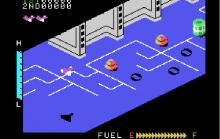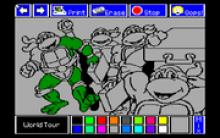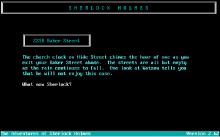Darklands
Press Keyboard right side: Alt+Enter keys to switch to full screen game play, and Alt+Enter keys to return.
How to play Darklands
Each game uses different controls, most DOS games use the keyboard arrows. Some will use the mouse.
Darklands Description
This type of gameplay is an early example of open world in role-playing video games. The player is free to complete quests that will give them a positive reputation, or to pursue a negative reputation by performing evil deeds. In Darklands the player's reputation is limited geographically, allowing the player to be simultaneously hated in one region and exalted in another. There are a limited number of quest types available, causing the game to become repetitive after extensive play.
The setting for Darklands is medieval Europe as the inhabitants thought the world was at the time. All the cities that one's party may visit in the game are real places that existed in the Holy Roman Empire of the 15th century. Most are in modern-day Germany, but some are in other countries including Denmark, Netherlands, Luxembourg, France, Switzerland, Austria, the Czech Republic and Poland. The city names given in the game are old German names of the cities, some of which are now exonyms; the new local names are given in parentheses.
There are no other species available in character creation — all players are human and are differentiated by occupation. Any party member is capable of performing what are known as class-based feats in many other role-playing games, but skillful players usually improve the party member's skills only in the appropriate area. Thus, the equivalent of a cleric in this game would be someone who specializes in religious studies as well as healing skills. Because the character specializes in the above, however, does not preclude him or her from learning artifice skills, such as lock picking. Age is a factor, as characters will begin to lose physical prowess as they age. However, the older the player is when the character is generated, the more skills and better equipment he or she starts with.
While the majority of the game uses text-based menus—enhanced with hand-painted illustrations describing the player party's available actions, the party's movement between cities and during battle uses a graphical user interface. The real-time combat is dependent not only on the characters' skills, but also the type and quality of weapons used against the enemy and its armor. For example, using swords against plate armored foes would be less effective than using flails or maces.
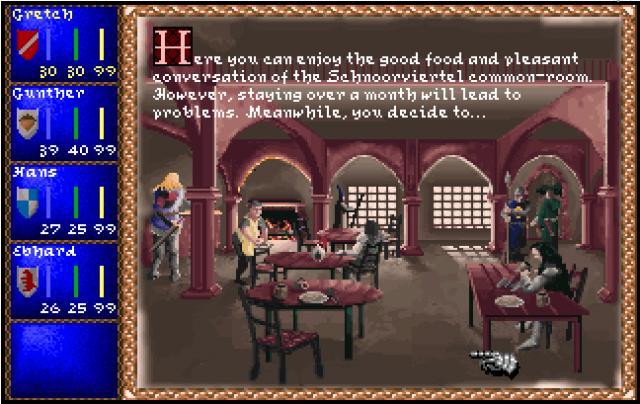
Darklands - additional information






